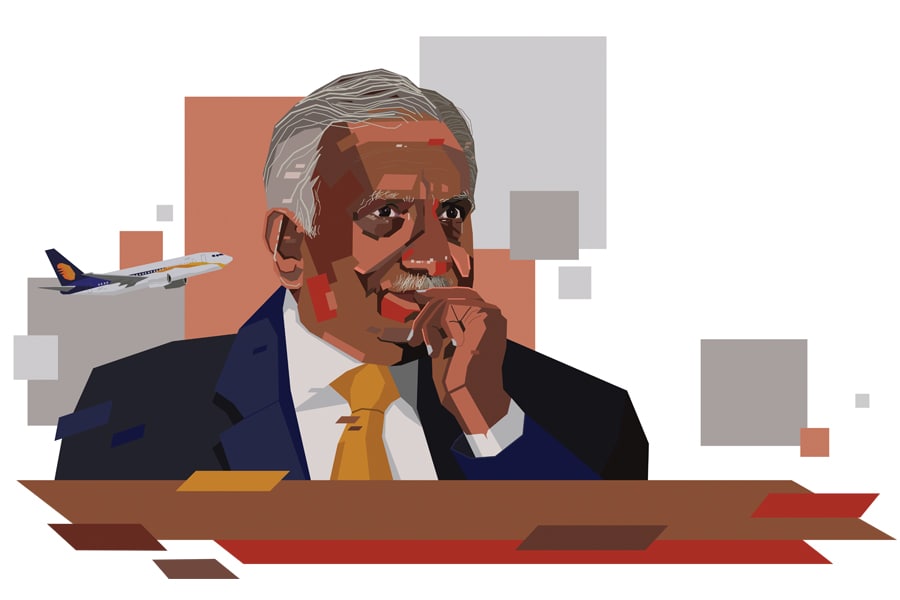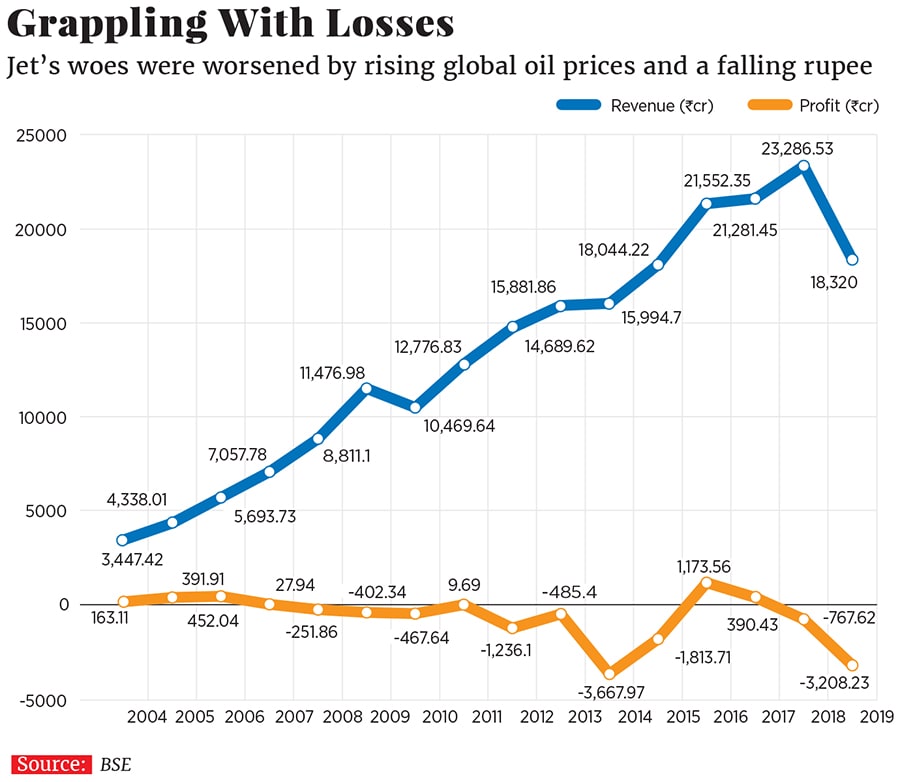
Jet Airways: How Naresh Goyal lost the plot
As Jet Airways flights got grounded on April 17, its founder's peers and aviation experts explain how his ego brought a set of problems to the beleaguered airline
 Naresh Goyal, the Founder of Jet Airways;
Naresh Goyal, the Founder of Jet Airways;Illustration: Chaitanya Dinesh Surpur
Tarsem still remembers Naresh Goyal vividly, although they last met in 1970. Sitting in his family-owned saree shop of 100 years in the alleys of Patiala, Punjab, the 73-year-old recalls how the young Goyal, three years his junior, was always yearning for more even as he was struggling to make ends meet at home.
“There was something about him,” says Tarsem. “Back then, he used to say that he could even speak to the prime minister. He had self-respect and was honest. Even though the family experienced extreme poverty, they were principled in their work. Much of that was passed on from Naresh’s mother, Mayadevi, who held the family together.”
Tarsem grew up with Goyal and his three brothers in Patiala after the latter’s family shifted to the princely town in the early 1960s. The migration was a result of Goyal’s father, Jagdish, suffering heavy losses in his gold business. “They had a huge jewellery business in Sangrur, a village close to Patiala,” says Tarsem. “But that ran into losses.”
Goyal is the youngest of four brothers. He also had three sisters, about who not much is known. The brothers, however, found jobs in Patiala. Tarsem says the eldest, Mihish Kumar, worked in the electricity department, while another, Surinder Kumar, joined Goyal in his airline journey. The third, Rajinder Kumar, was a photographer and set up his studio, RK Studio, close to Tarsem’s old shop in Patiala.
“His mother was the greatest influence in his life,” says Tarsem. “Even though they faced hardships, she never asked for help. She would buy fabric on loan from us and do tailoring work… the sale proceeds were used to repay us.” Seth Lala Charan Das, a relative of the Goyals and a prominent businessmen in Patiala, was of great help to them.
“In Patiala, there is a saying that the business that you build won’t last beyond your lifetime or that it will at least collapse by the next generation,” says Arvind Trivedi, a chartered accountant, who was Goyal’s neighbour. “In the case of Das, the family business went down the drain. At one point, they used to own all the big theatres and factories in Patiala… today nobody knows where the younger generation has disappeared.”










